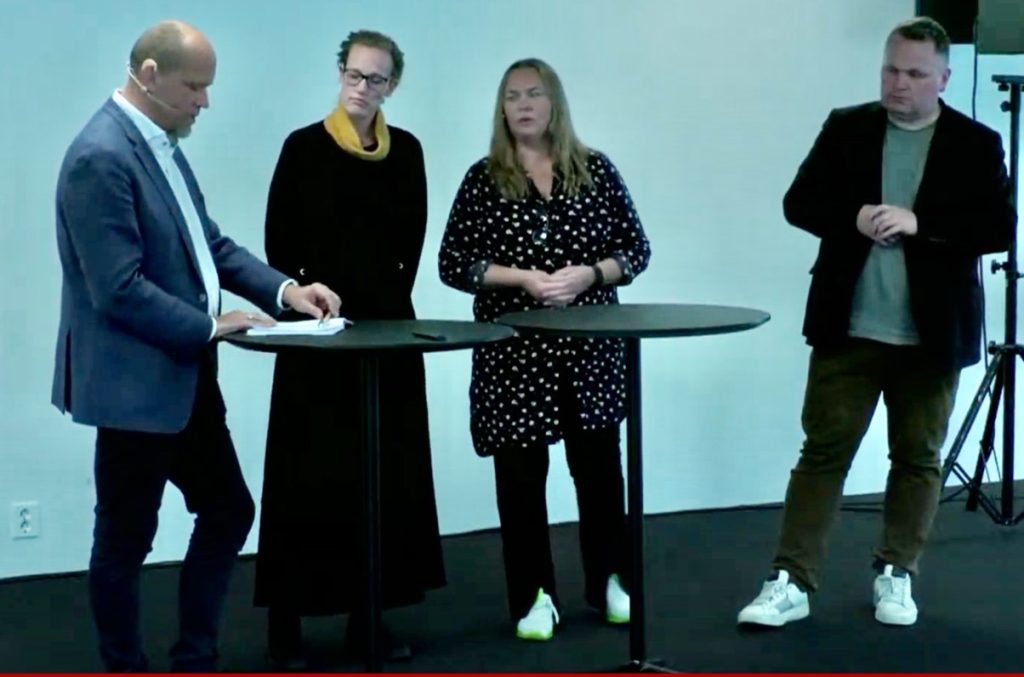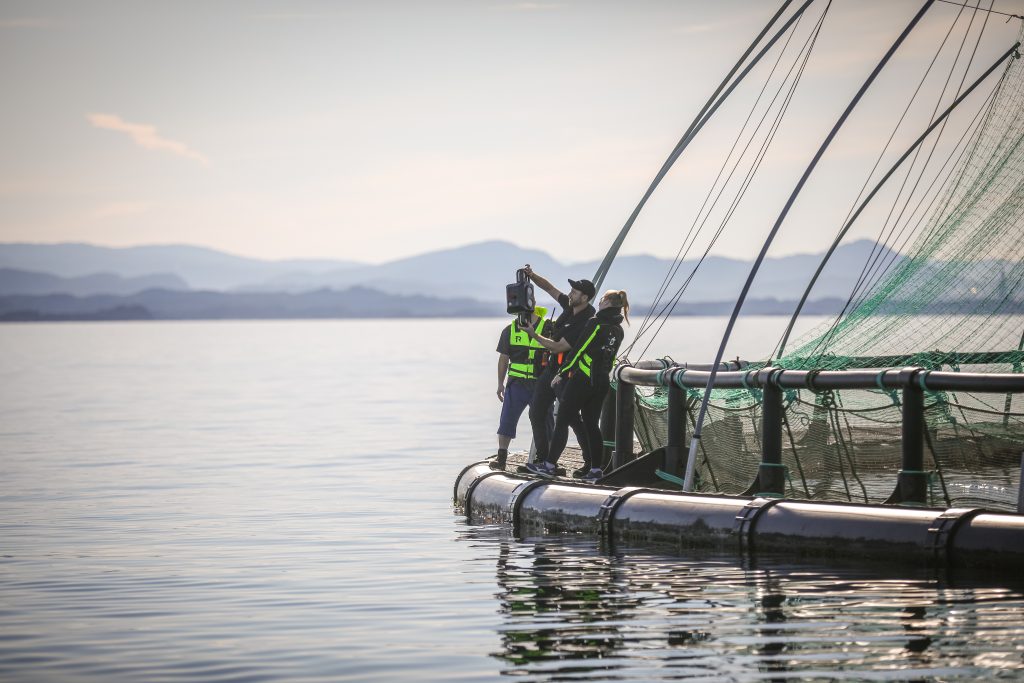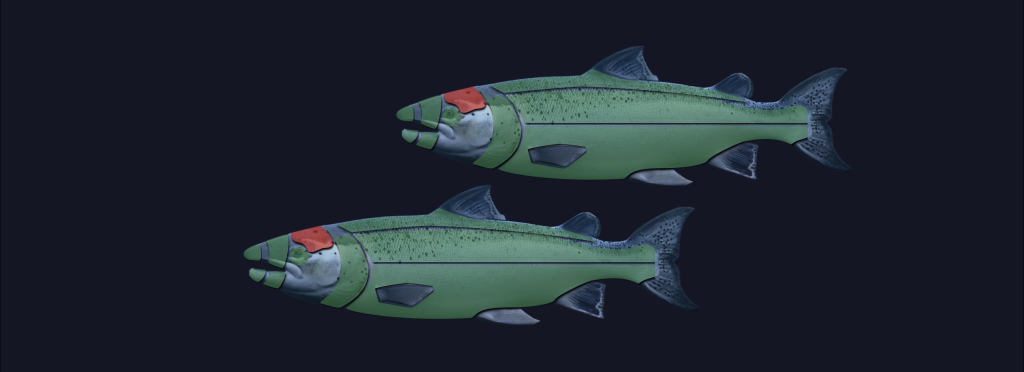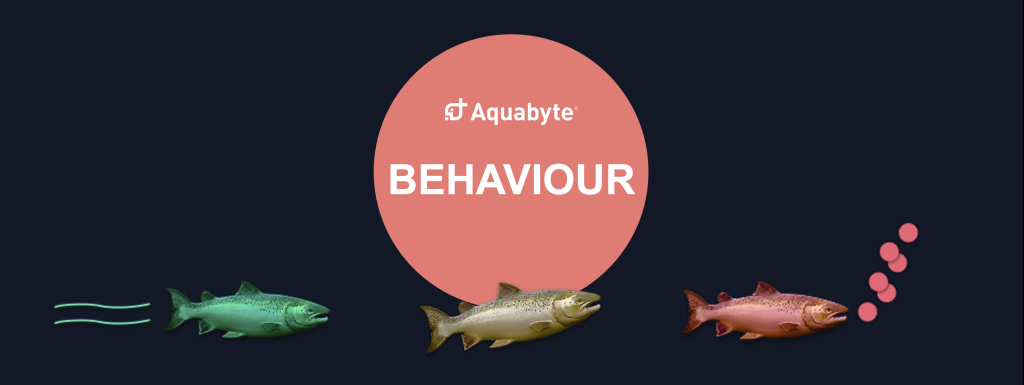“Technology alone provides no value. It is the decisions you make with new insight that create the value”, stated Inge Ådland from Deloitte, when Aquaculture AI’s webinar was launched the other day. “To really improve fish welfare, all players in the industry must collaborate in an interdisciplinary way and the technology must be standardized”, remarked researcher Cecilie Walde from the Veterinary Institute.

The Norwegian Food Safety Authority’s Else-Marie Stenevik Djupevåg followed up by emphasizing that the industry depends on good and suitable technology that is adapted to the fish. This clearly contributes to better fish welfare.
“New welfare indicators are important and the technology is developing rapidly”, said the marine biologist from the Norwegian Food Safety Authority. She also signaled that the Norwegian Food Safety Authority wants to test more data-driven oversight in the seafood industry. “We experience major health and welfare problems at many aquaculture facilities. Both artificial intelligence, AI, and camera technology are good tools that enable us to be able to detect needs and, in addition, to be able to predict a development. We expect such technology to become more and more common”. The marine biologist also referred to the traffic light system, where low lice numbers and few drug treatments can promote growth, but also trigger poor welfare in the cages.
“The development is fast and there is a need for an adapted set of regulations. That is why it is good that we already have a set of regulations that do not require that risk-based supervision at the facilities only has to take place physically, she adds.
Both new technology and standardization are important
“A digitized monitoring method based on standardized welfare factors will reduce the need for unnecessary handling of the fish and physical inspection visits. However, this will not replace requirements for sampling fish for disease and sampling in observation zones for disease monitoring, as well as examinations of fish in case of increased mortality.”
“The work on standardization of fish health and fish welfare is underway. A new edition of NS 9417 has been reviewed and will soon be adopted. The standard specifies operational welfare indicators for routine monitoring of welfare for use in day-to-day operations. These can be used to evaluate the status in a wider context, work preventively and carry out better supervision. In the long term, unified tools and standardized indicators for welfare will be developed and used by the entire industry. It is important that we share figures and data, and that this knowledge is used by all the players in the preventive work”, said Stenevik Djupevåg.
Reduce the distance between the actors
In her presentation, Cecilie Walde from the Veterinary Institute advocated that the distance between finance, research, administration and welfare must be reduced. “This places greater demands on interdisciplinary collaboration”, she stressed. “In our research, we also clearly see a need for standardized high-resolution data from the new technology”.
The farming industry needs change
“It is a big challenge for the breeders to have an overview of what is going on in the pen, pointed out Solveig Eide Kirkeland who is product manager at Aquabyte. “Fish welfare is the biggest challenge facing the industry. In Norway alone last year, 54 million fish died in the sea phase of development. We experience high mortality, despite the fact that Norway is an international frontrunner when it comes to fish welfare as compared to many other farming nations. It is crucial to find methods and tools that will reduce fish mortality”.
From manual scoring to image-based scoring
“Artificial intelligence and smart algorithms provide accurate data on the fish’s welfare status. Machine learning has made it possible to move from a manual scoring procedure to an image-based scoring and assessment of fish welfare. Everything you can visually observe on the fish can now be detected using this technology. The industry has lacked a good management tool and bases operations on established routines, historical data and gut feeling. Now, decisions can be made based on knowledge instead of established practice and gut feeling.
In the panel debate towards the end of the webinar, it also became clear how good it is to see how aggressive the administration is in adapting to new technology. In order to be successful, it is therefore critical that both administration, research and industry move in the direction of relevant and unified expertise.






